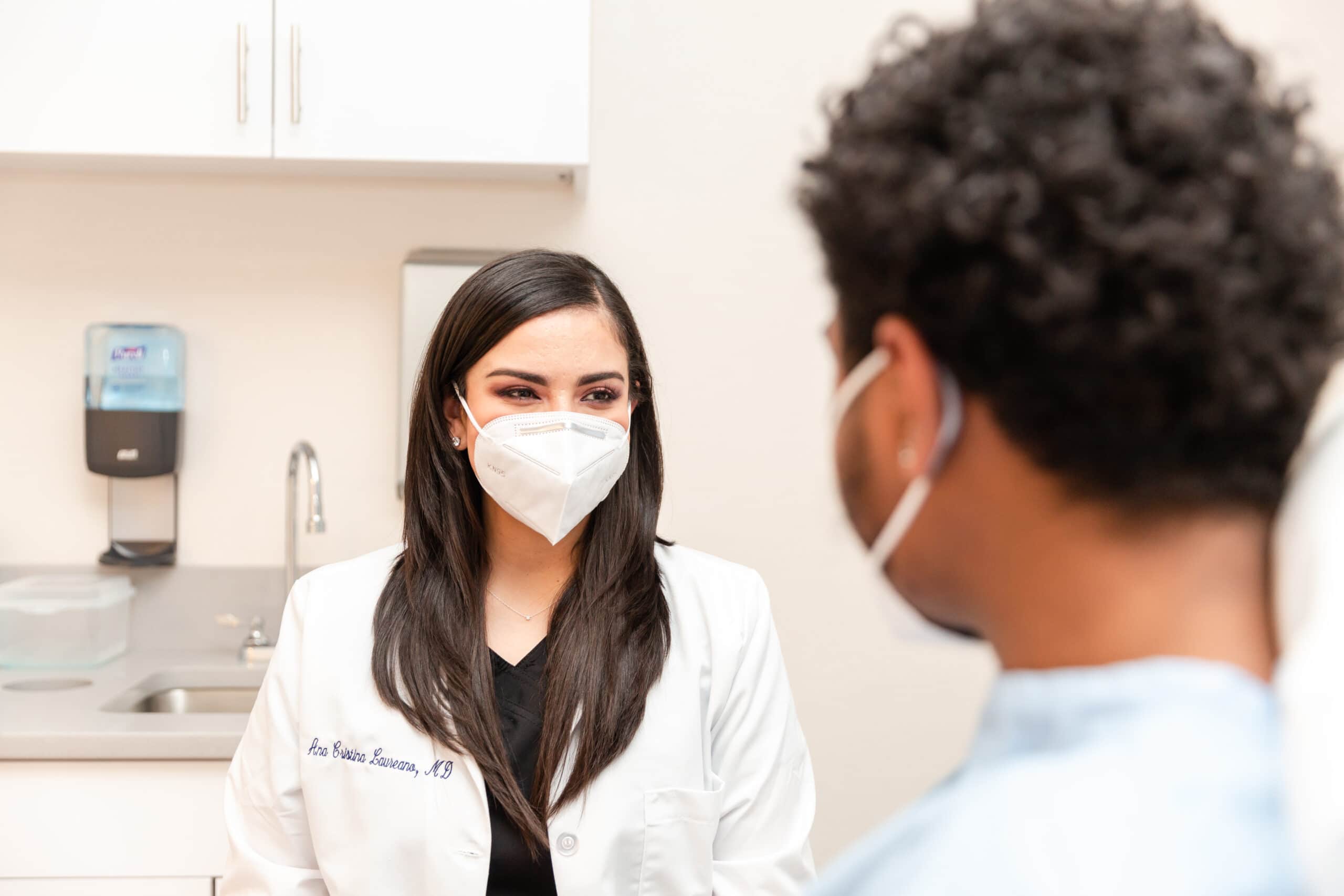
Mohs Surgery
Mohs surgery is the most effective treatment to remove and prevent the reoccurrence of basal cell carcinoma and squamous cell carcinoma.
- Downtime: Varies Depending on the Depth of Treatment
- Pain Level: Mild
- Results Duration: Long-Lasting
Treats:
Several types of skin cancer
Side Effects:
Pain, swelling, bleeding at the treatment site
Location:
Anywhere on the face and body where skin cancer has developed
Follow Up:
Routine visits are expected within the months after treatment
How Performed:
Cancerous lesion is removed layer by layer, while healthy tissue is preserved
Preparation:
Avoid medications that increase the risk of bleeding before treatment. Topical anesthetics are provided before the procedure
Procedure Type:
Surgical excision
Expected Outcome:
Elimination of cancerous tissue
Onset:
Recovery can take several weeks
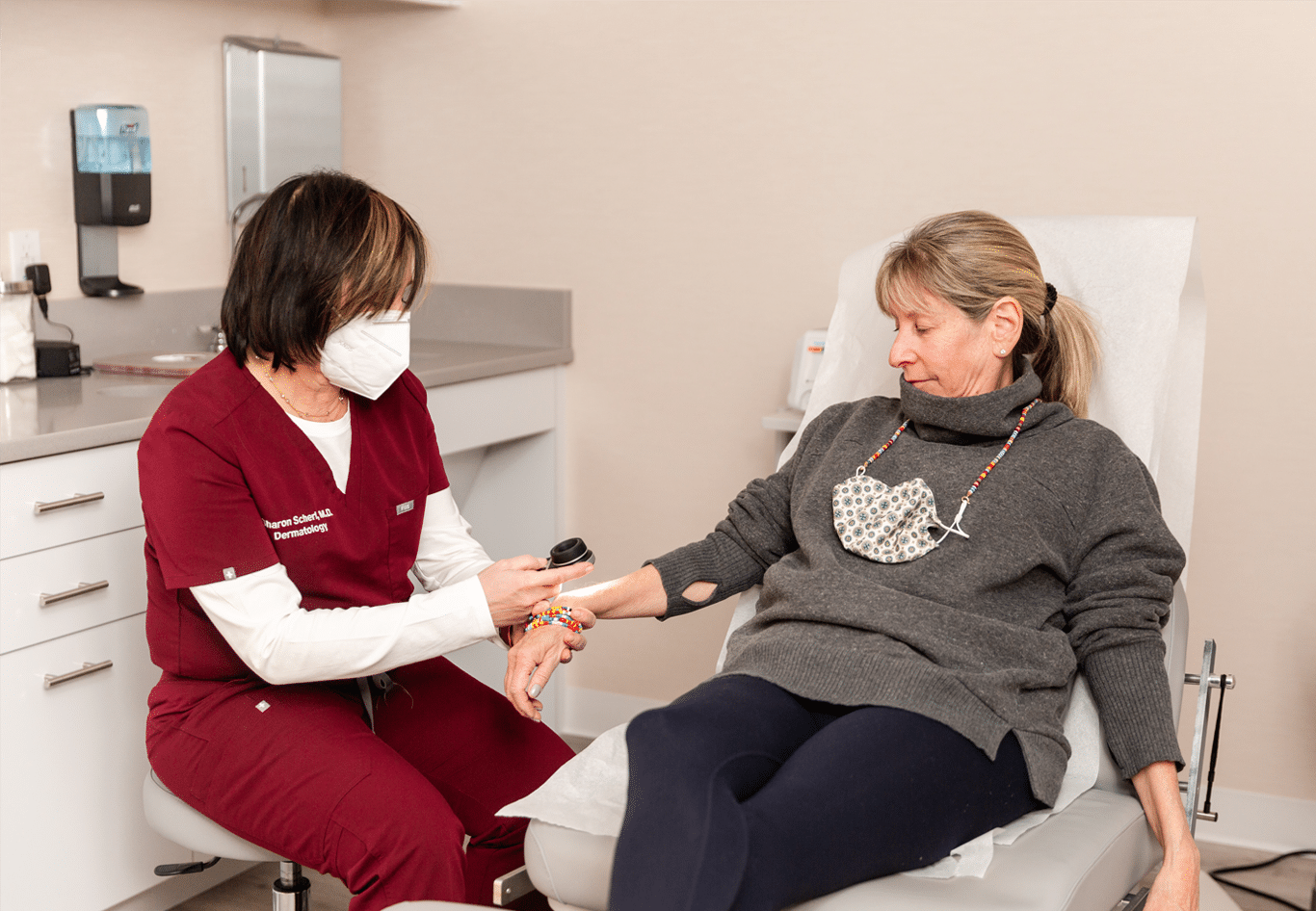
Skin cancer is the most common cancer in the United States and worldwide. But when detected early, it is also the most treatable form of cancer. Specifically, Mohs surgery is widely accepted as the most successful and least invasive technique for removing certain types of skin cancer, with a cure rate of 98 to 99 percent for basal and squamous cell carcinomas.
With our new state-of-the-art facilities and a fully-equipped lab dedicated to Mohs surgery, Scherl Dermatology in Englewood Cliffs, NJ, is committed to consistently exceeding patient expectations by providing comprehensive care with the highest level of full-service skin cancer treatment.
what is mohs surgery?
Mohs surgery is the process of removing cancerous lesions layer by layer with expert precision. The surgeon continues lifting each layer until they no longer see any cancer cells. They use a microscope to examine the skin cells after removing each layer to ensure no trace is left behind. This treatment is highly effective at treating different types of skin cancer.
what are the types of skin cancer mohs surgery treats?
Mohs surgery is considered the gold standard surgical technique for the treatment of basal cell carcinoma (BCC) and squamous cell carcinoma (SCC), which are the two most common types of skin cancer. Mohs surgery is also occasionally recommended for more aggressive skin cancers such as melanoma. Mohs surgery can be used to treat an early melanoma, but it must be categorized as lentigo maligna melanoma which is a skin cancer that stays close to the surface of the skin for a certain time.
Generally, Mohs surgery is ideal for the following situations:
- Skin cancer appears near cosmetically important areas or critical areas with vital function and little tissue beneath (e.g., eyelids, nose, ears, scalp, hands, feet, and genitals)
- Skin cancer was treated and has returned
- Skin cancer is large and aggressive
- Skin lesions have uneven or indistinct edges
How is mohs surgery performed?
Mohs surgery is a very precise procedure. A dermatologic surgeon will first mark the skin to outline the lesion and to map the affected area, followed by the injection of a local anesthetic into the skin cancer site. The surgeon will then use a scalpel to gently remove the tumor, along with one layer of tissue from around it. The tumor and tissue will be taken for analysis while the patient waits. If cancer is found after the samples have been analyzed under a microscope, an additional layer of tissue will be removed from the exact area where the malignancy was found. This process is repeated until all cancerous tissue has been removed and no more cancer cells are detected.
Mohs surgery, therefore, requires extensive training and skill. The procedure is performed by doctors who are trained to fulfill three crucial roles:
- The surgeon who maps the lesion and removes the layers of cancerous tissue
- The pathologist who sections and analyzes the specimens
- The surgeon who closes and reconstructs the wound
What are the benefits of Mohs surgery
It Minimizes Scarring
The layer-by-layer approach of Mohs surgery keeps the incision as small as possible, reducing scarring and promoting faster healing. The technique is also designed to remove the entire tumor while affecting minimal amounts of healthy tissue, resulting in precise results and less skin disfigurement.
It Is A Quick And Efficient Procedure
Because Mohs surgery is performed as a single-visit outpatient procedure done with local anesthesia and with the lab work conducted on-site, the technique proves to be a very efficient and cost-effective treatment for skin cancer.
It Has High Cure Rates
Mohs Surgery offers the highest success rates. Cure rates are:
- Up to 99% for skin cancers that have not been treated before
- Up to 94% for skin cancers that have recurred after previous treatment
It Is Nearly Painless
Apart from the injection of anesthetics to numb the area prior to the surgery, patients will experience very little pain during and after the procedure. Depending on the patient’s preferences, the surgeon can also provide oral medication to help them relax on the day of the procedure. Although minimal, any pain experienced after the surgery can be relieved by over-the-counter medications.
what is the recovery like?
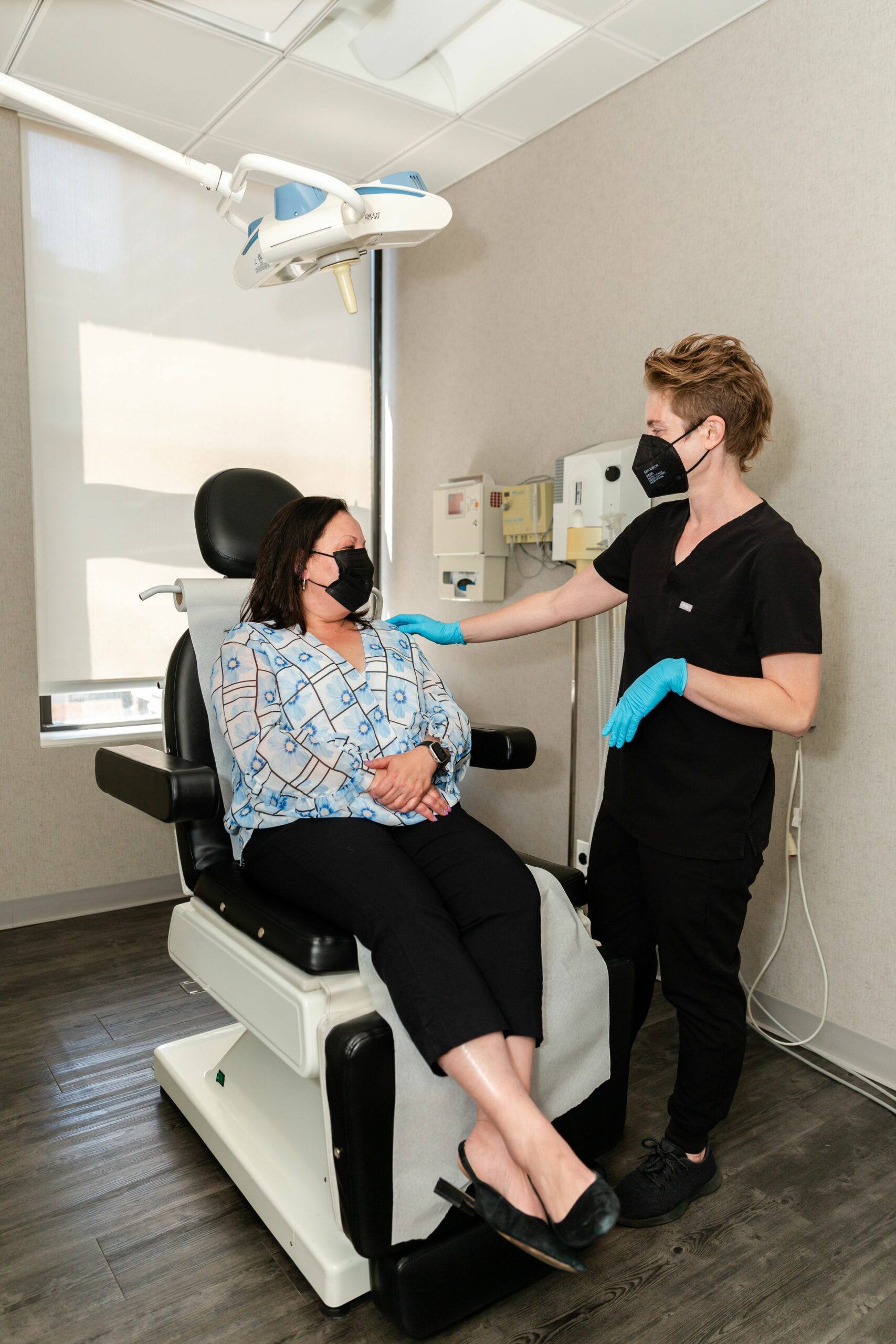
After surgery, we will discuss the options for managing the wound. Depending on the patient’s specific case, choices will include:
- Letting the incision heal on its own
- Stitching the incision closed
- Taking a skin flap or graft to cover or close the wound
- Combining any of the approaches listed above
- Temporarily closing the wound and scheduling reconstructive surgery for later. A Mohs surgeon can coordinate the repairing of the wound with other specialists such as plastic surgeons, hand surgeons, and oculoplastic surgeons.
The surgical site will be covered with a bandage which should be worn for 24-48 hours. Patients may experience discomfort, redness, or swelling after the procedure, but these issues are temporary and should improve within a week. Antibiotics will be prescribed to help prevent infection and instructions on how to clean the wound will be provided. The application of ice packs is typically recommended.
If the wound was stitched closed, sutures are usually removed 5-10 days after surgery. To allow the wound to heal and to prevent bleeding, it is recommended to limit vigorous physical activity and excessive bending for one week after the surgery is performed.
The importance of skin checks
Mohs surgery patients should commit to regular follow-up examinations with their dermatologist since they are at increased risk of developing additional skin cancer and pre-cancers. Examination of the surgical site is also necessary in order to monitor the recurrence of any treated skin cancer.
However, patients should not wait for a cancer diagnosis in order to have regular skin checks. Early detection and treatment will always benefit you. Skin checks are recommended for everyone, particularly those who have:
- Abnormal moles and sunspots
- A history of frequent and extensive sun exposure
- A family history of skin cancer
At Scherl Dermatology, we urge patients to have routine skin checks to help facilitate a preventative approach to skin cancer management. Detecting skin cancer only takes a few minutes and a screening by a dermatologist can save your life.
We can also guide you on how to perform a skin self-exam (a head-to-toe exam performed monthly at home). During this exam, you must look for any potential malignancies in the form of moles or marks on the skin that fall under any of the following “A, B, C, D, E” categories:
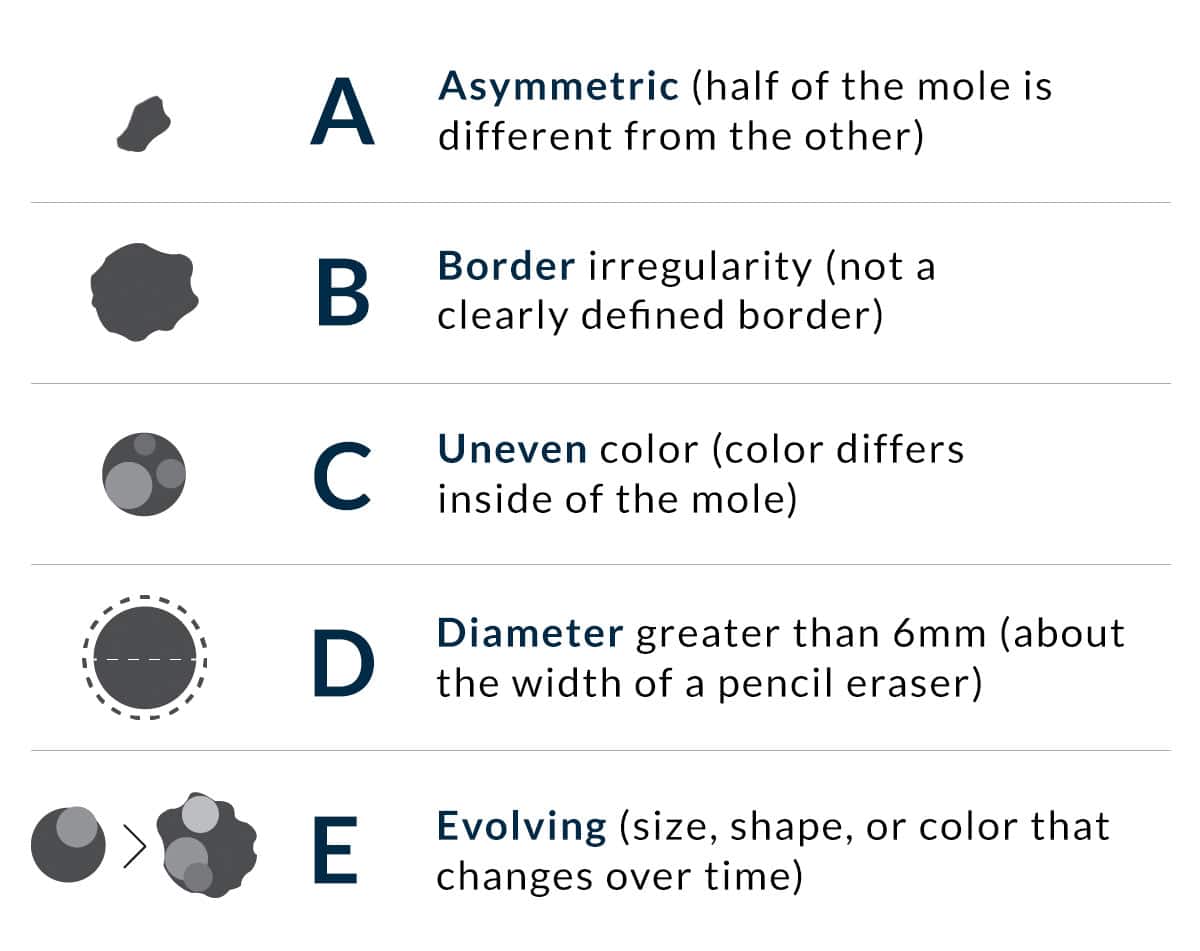
LEARN MORE AT YOUR CONSULTATION IN ENGLEWOOD CLIFFS, NJ TODAY
Mohs surgery is a highly effective, targeted treatment for certain types of skin cancer. To schedule a consultation with an experienced Mohs surgeon contact our office today.
OTHER Medical DERMATOLOGY
Photodynamic Therapy
Photodynamic Therapy (PDT) is a medical treatment that involves two steps: the use of a light-sensitive drug and the application of a light source to destroy abnormal cells.
Phototherapy
The narrowband phototherapy lightbox is Scherl Dermatology’s latest innovative treatment. Carefully controlled, it is an extremely effective tool for treating inflammatory skin conditions such as psoriasis and eczema.
Eczema
Eczema is a chronic skin condition that involves irritated and itchy patches of skin.
Moles
It is usually quite easy to remove moles surgically. Usually there is a trade involved – removing the mole in exchange for a small scar. If the mole is large and the scar will be less noticeable, then it is a good trade.
Rosacea
Many people suffer from rosacea. It is not contagious, but there is some evidence to suggest that it is inherited. There is no known cause or cure for rosacea.
Rash
“Rash” is a general term for a wide variety of skin conditions. A rash refers to a change that affects the skin and may appear as a red patch, small bumps or blisters on the skin.
Warts
Warts (Verrucae) are common growths that are caused by the Human Papilloma Virus (HPV). These can commonly involve the fingers, hands, feet, while certain strains can cause genital warts.
Skin Growths
REMEMBER you may have multiple types of bumps and bumps and some that may not be listed here:
- Small, hard, white bumps (milia)
- Enlarged oil glands (sebaceous hyperplasia)
Psoriasis
Psoriasis is a common inflammatory skin disease characterized by itchy or sore patches of various sizes. Often theses patches of skin have, silvery scales.
Thousands of People in the Metro Area Trust Scherl Dermatology
CONTACT US
Scherl Dermatology
Englewood Cliffs, NJ 07632
Same-Day Appointments Now Available
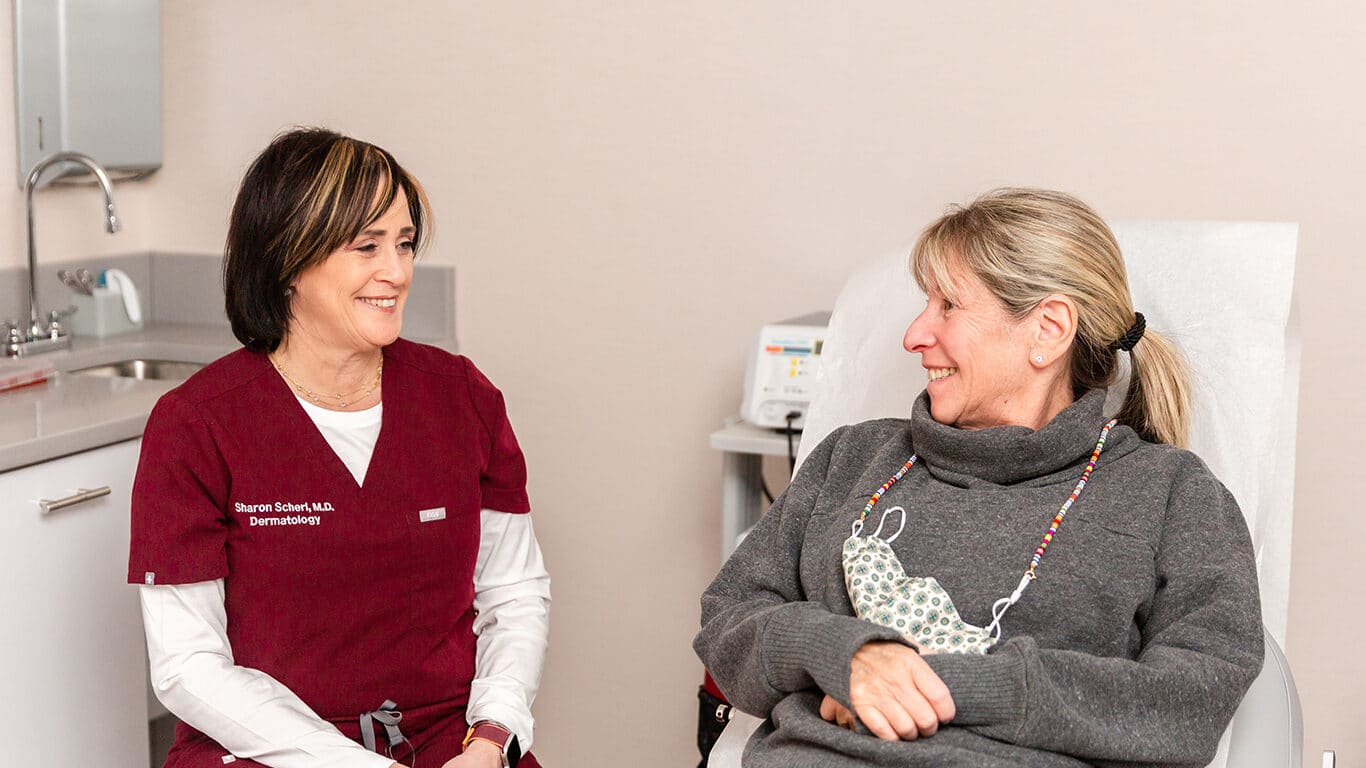

CONTACT US
Scherl Dermatology
140 Sylvan Ave. Suite 302,
Englewood Cliffs, NJ 07632
Same-Day Appointments Now Available
Scherl Dermatology
©2024 Schweiger Dermatology Group. All Rights Reserved. Privacy Policy | The information available on this website is provided for informational purposes only. This information is not intended to replace a medical consultation where a physician's judgment may advise you about specific disorders, conditions and or treatment options. We hope the information will be useful for you to become more educated about your healthcare decisions. If you are vision-impaired or have some other impairment covered by the Americans with Disabilities Act or a similar law, and you wish to discuss potential accommodations related to using this website, please contact us at 201.568.8400 .

